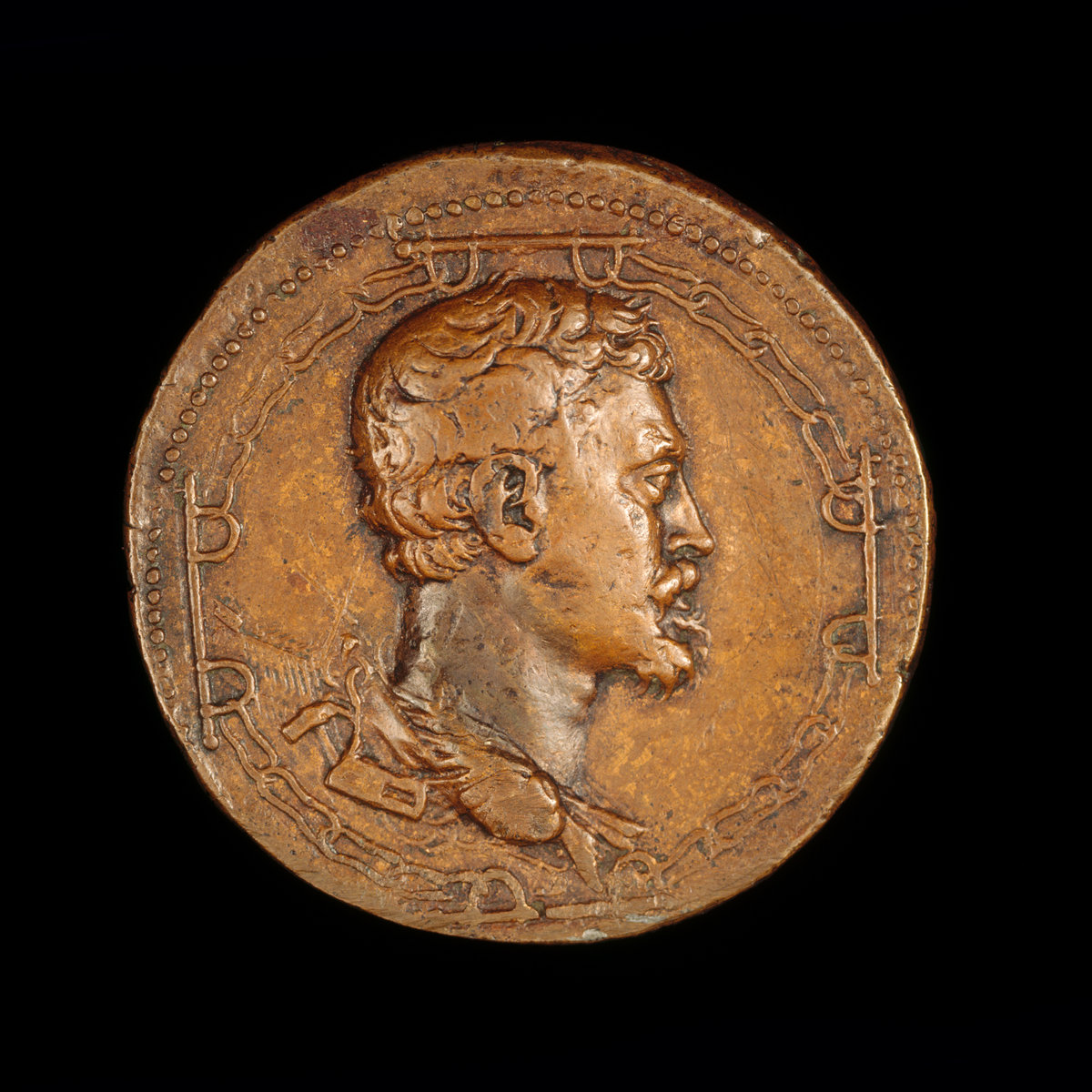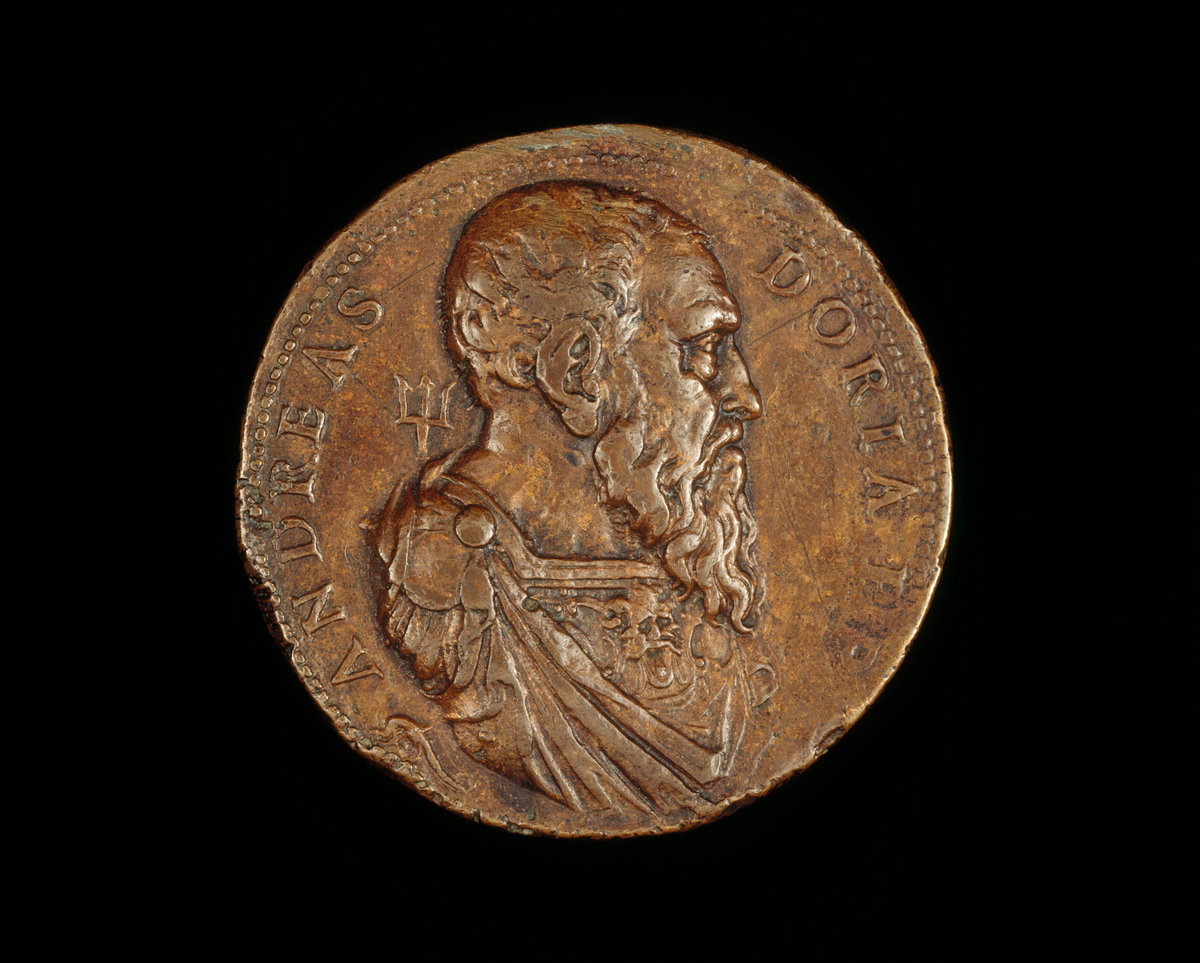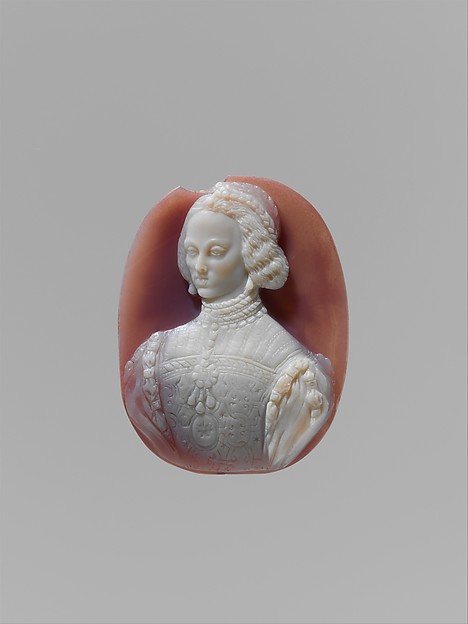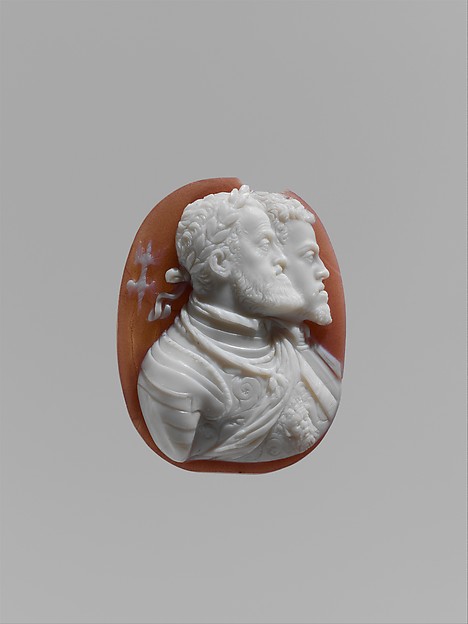By: Amy Fredrickson
Leone Leoni died on July 22, 1590, in Milan. He was born in Arezzo in 1509 and was the son of a stonemason. He began working in the Ferrara mint, as a goldsmith and medalist; however, his position was revoked when he was accused of counterfeiting medals. In 1537, Leoni moved to Rome where he was appointed as an engraver to the papal mint the following year. In 1540, he was sentenced to row as a galley slave for attempting to murder a papal jeweler named Pellegrino de Leuti. The punishment for this crime was supposed to be losing the right hand. Leoni only served a year of his sentence, and due to his political connections, he was released from the galley. Andrea Doria, who was a respected naval commander, was one such connection that led to his release. In fact, Leoni created several medals and sculptures that resembled Doria, as homage for his help.
In 1542, Leoni moved to Milan and became an engraver at the Imperial Mint. His reputation secured him a place as a sculptor for the Spanish court, where he worked for Charles V and his wife, Isabella. He created sculptural busts and medals. He produced many works for the court, but his most illustrious works are the Bust of Emperor Charles V (1553–55) and Charles V and Fury (1549–53).
The Metropolitan Museum of Art holds an outstanding example of Leoni’s oeuvre, a cameo. Correspondence between the sculptor and an agent of Charles V proves that Leoni worked hard on the detailed portraiture of this cameo. Leoni wrote that the stone inspired him to carve a double portrait of Charles V and Philip II, his son. The opposite side is a portrait of Isabella, wife of Charles V and mother to Philip II.
Generously, in 1549 Charles V provided Leoni with a large house in Milan, where Leoni lived and worked. He was given funds to decorate the house, which he transformed into Casa degli Omenoni. Leoni created this house as a tribute to Marcus Aurelius.
In addition to producing artwork, Leoni was also a collector. He procured an art collection that included plaster casts of both modern and antique sculptures. Pope Pius IV gave Leoni permission to make casts of the papal collection. Leone displayed these work in his house, where he held an equestrian portrait of Marcus Aurelius, Michelangelo’s Risen Christ, and several plaster casts, including one of the Apollo Belvedere and Michelangelo’s Pietà. Michelangelo even permitted him to make casts in his workshop, such as copies of Dusk and Dawn. This collection was considered Milan’s first private gallery. Leoni displayed his paintings in an octagonal room inspired by Roman architecture. On the first floor he displayed Correggio’s Jupiter and Io, Jupiter and Danaë, a drawing by Michelangelo, as well as paintings by Titian, Tintoretto, and Parmigianino. His collection in conjunction to the architecture of his house elevated his status as both an artist and collector. Today, Leoni’s house draws attention for its giant statues by Antonio Abondio (1538-1591), which decorate the façade.
When Leoni died, he left his son, Pompeo, a large inheritance. Pompeo followed in his father’s footsteps and became a successful court sculptor to Charles V and his successor Philip II. When Pompeo moved to Spain, he took his father’s works and the impressive art collection from Milan. He also completed the work his father left unfinished. Since Pompeo took his father’s work to Spain, Leoni’s style influenced the development of the subsequent Spanish sculptors.
References:
Britannica Academic, s.v. “Leone Leoni,” accessed July 21, 2017, http://academic.eb.com.online.library.marist.edu/levels/collegiate/article/Leone-Leoni/47821
Di Dio, Kelley Helmstutler, “Leone Leoni’s Collection in the Casa Degli Omenoni, Milan: The inventory of 1609,” The Burlington Magazine, Vol. 145, No. 1205 (August, 2003), pp. 572-578.
Mezzatesta, Michael P., “Leoni.” Grove Art Online. Oxford Art Online. Oxford University Press, accessed July 21, 2017, http://www.oxfordartonline.com.online.library.marist.edu/subscriber/article/grove/art/T050443pg1.
Further Reading:
Falomir Faus, M., El retrato del Renacimiento, (Museo Nacional del Prado, 2008).
Hill, George Francis, and Graham Pollard. Renaissance Medals from the Samuel H. Kress Collection at the National Gallery of Art. (London, 1967).
Pollard, John Graham. Renaissance Medals. The Collections of the National Gallery of art Systematic Catalogue. 2 vols. (Washington, 2007)
Images:
Leoni Leoni, Self-Portrait [reverse] Andrea Doria, 1466-1560, Genoese Admiral [obverse], Bronze, 1541, The National Gallery of Washington D.C.
Leone and Pompeo Leoni, Emperor Carlos V and the Fury, Bronze, 1551-1555, Museo del Prado, Madrid.






